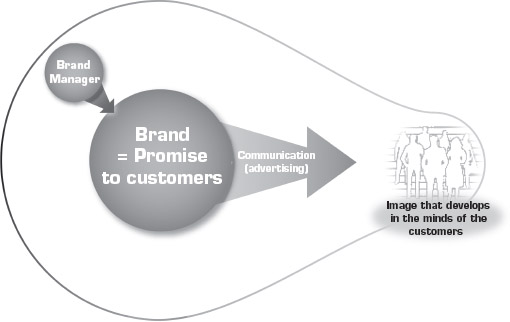INTRODUCTION
As the business and branding environment is changing, brand management has to respond with adequate tools and frameworks. When the brand's main job was to make the customer happy and to drive sales, branding focused naturally first on creating a favourable image with customers (e.g. through advertising) and later on creating a positive customer experience (through the management of customer interactions, also called “touchpoints” or “moments of truth”1).
The commonly used definition of brands as “the sum of all associations customers have with a certain product or service” perfectly suited this environment and brand paradigm; but today, brands are expected to deliver on a much broader range of objectives beyond protecting premium prices, some of which they are not (yet) particularly well equipped to master:

Figure 0.1 Traditional understanding of brands
- Attract and retain talent. During recruitment drives, brands are now supposed to position the company behind the brand as an attractive employer.
- Increase employee commitment. Through positive identification brands are responsible for increasing employee motivation, commitment and satisfaction, thereby reducing attrition, sick leave and accidents, and improving productivity.
- Drive the share price. Via volatility reduction platforms such as customer loyalty and growth platforms such as geographical expansion and product ...
Get Connective Branding: Building Brand Equity in a Demanding World now with the O’Reilly learning platform.
O’Reilly members experience books, live events, courses curated by job role, and more from O’Reilly and nearly 200 top publishers.

